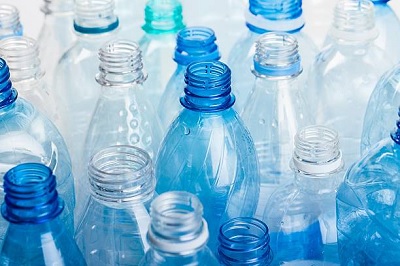A new report from MarketsandMarkets expects the rigid plastic packaging market to sustain its upward momentum. The market is projected to grow from US$207.8 billion in 2022 to US$262.5 billion by 2027, at a CAGR of 4.7%. The growth of the rigid plastic packaging market is attributed to rising demand for this type of packaging in such sectors as food, beverages, healthcare, cosmetics, industrial, etc.
Rigid plastic packaging is widely used in the food & beverage industries as it increases the shelf life of the products, thus preventing food loss. The market for rigid plastic packaging in the healthcare segment is also projected to grow at a high rate, owing to the increase in consumption of pharmaceutical products due to the ageing population and growth in incidence rates of chronic diseases. Rigid plastic packaging offers aesthetic appeal and durability to the product, which increases its marketability; hence, it is used in the cosmetics & toiletries industry.
Tube, cups and pots as fastest growing type of rigid packaging
Rigid plastic tubs, cups, and pots are used in the food service and retail industry to package anything from cream and dips to insecticides. Cups are precision thermoformed, which are sealed using a heat sealable flexible lid. These cups generally have flat edges for perfect seals. Some rigid cups also have rolled rims. These products are generally used to pack dairy products such as cream, yogurt, and dairy desserts. The report expects this segment to projected to witness the highest growth rate because of the increasing demand for single-serve packs and properties such as cost-effectiveness, portion control, and less environmental impact.

Healthcare as 3rd largest markets for rigid packaging sector
Healthcare products, which include pharmaceutical and medical products, are required to be protected from light, moisture, contamination, physical damage, or anything that can alter the quality of the products. The packaging quality of healthcare products plays a vital role in ensuring their protection. It involves the manufacture of a wide range of packaging materials such as paper, paperboard, cardboard, and rigid plastic packaging material. The MarketsandMarkets™ report expects growth in rigid plastic packaging to continue due to global medication consumption, which is expected to be significantly driven by the ageing demographic, leading to the increasing number of diseases and disorders. This will increase the demand for pharmaceutical products, which will further support the growth in rigid plastic packaging.
PET as one of the major materials for rigid plastic packaging
Polyethylene Terephthalate (PET) is a general-purpose thermoplastic polymer that belongs to the polyester family of polymers. Polyester resins are known for their excellent combination of properties such as mechanical, thermal, chemical resistance as well as dimensional stability attributes include superior transparency equal to that of glass, high mechanical strength, high rigidity at lower wall thickness, high flexibility, and high puncture resistance. These attributes enable the production of dimensionally stable rigid packaging with relatively small wall thickness and excellent oxygen barrier qualities, which make it suitable for packaging fresh foodstuffs. The application of polyethylene terephthalate takes place in industries such as food packaging, pharmaceutical packaging, box making, and electronics.
Blow moulding process takes leading role in rigid plastic packaging
Injection blow moulding is used to produce hollow plastic quantities. Products such as small medical and single-serving bottles are prepared using injection blow moulding. Extrusion blow moulding can be used to process different polymers such as polyethylene and polyvinyl chloride. Stretch blow moulding applications include jars, bottles, and similar containers because it produces items of excellent visual and dimensional quality compared to extrusion blow moulding. Many of the same materials used in blow moulding are also good choices for injection moulding, including HDPE, PS, PU, PP, and LDPE. There is a range of additional materials that are more uniquely suited for the solid products produced with injection moulding. HDPE is the most commonly blow-moulded plastic material. It is used in a vast array of products, including bottles for consumer liquids such as shampoos and motor oils, coolers, play structures, fuel tanks, industrial drums, and carrying cases.














